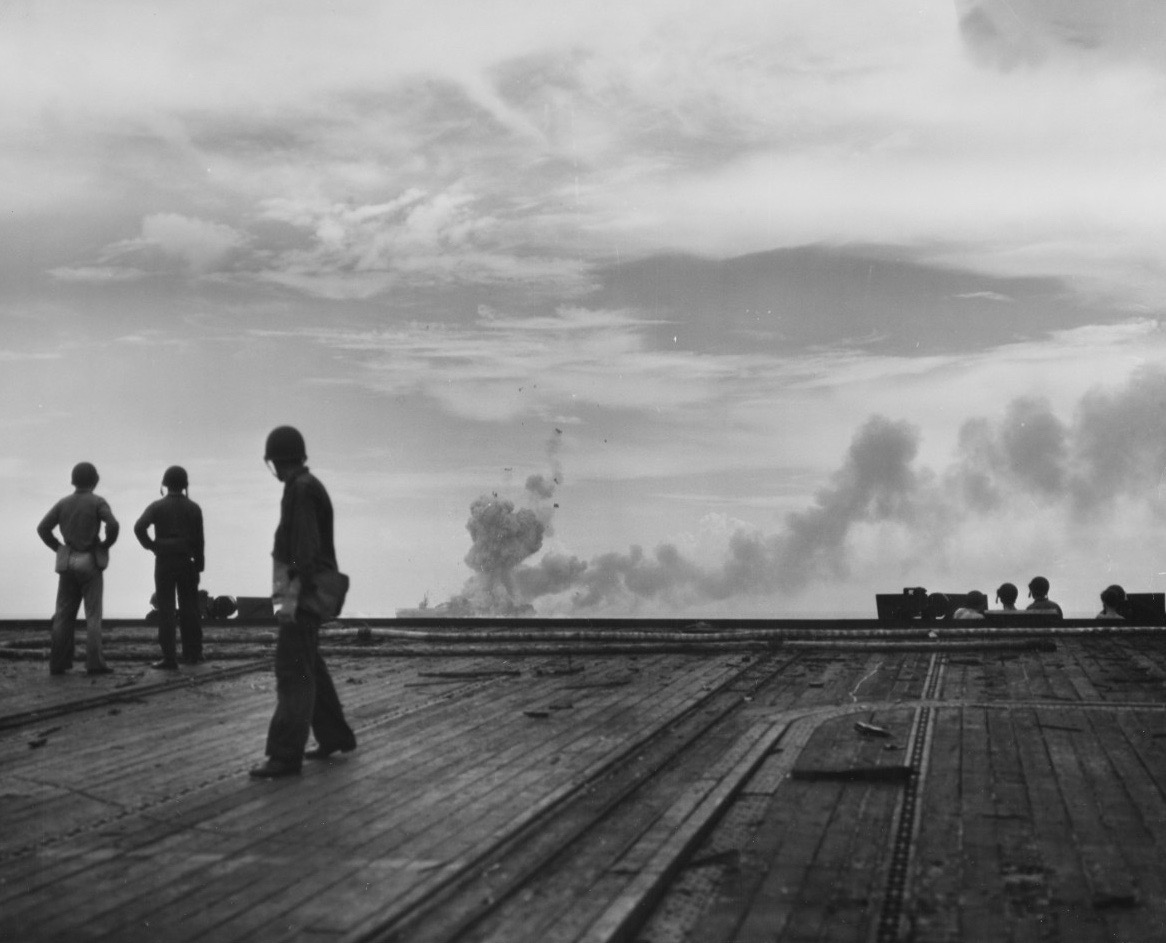The Marianas turkey shoot of June 1944 was arguably the finest hour in the history of the U.S. Navy. It has it all: complete dominance over the enemy, an inspiring level of bravery at all levels, bold command decisions tempered by caution and care for the lower ranks. The Marianas will always read like a heroic naval epic, with the operative word being “heroic.”
 The battle that took place a few months later in the Leyte Gulf, however, was a very different story. Here we can see the war against Japan moving from the realm of the heroic into the realm of the challenging, with both sides trying to deal with problems so huge that they simply became overwhelming. These were systemic problems, issues that emerge from the nature of war itself, heavily laden with chance, uncertainty and fog. As every student of the war knows, “Pacific” derives from an old Latin word meaning “too damn big,” and fighting a war in this vast ocean was never going to be easy. It didn’t matter how brave the sailors were, in other words, or how skilled their commanders, or how advanced their technology. Things were still bound to go wrong.
The battle that took place a few months later in the Leyte Gulf, however, was a very different story. Here we can see the war against Japan moving from the realm of the heroic into the realm of the challenging, with both sides trying to deal with problems so huge that they simply became overwhelming. These were systemic problems, issues that emerge from the nature of war itself, heavily laden with chance, uncertainty and fog. As every student of the war knows, “Pacific” derives from an old Latin word meaning “too damn big,” and fighting a war in this vast ocean was never going to be easy. It didn’t matter how brave the sailors were, in other words, or how skilled their commanders, or how advanced their technology. Things were still bound to go wrong.
In the battle of Leyte Gulf, the area of deployment for the opposing forces was some 450,000 square miles. If that number doesn’t impress you, think of it this way: it was an area greater than the American states of Utah (85,000 sq. mi.), Colorado (104,000), Arizona (114,000), and New Mexico combined (122,000). Likewise, the battle itself (the extreme range of tactical action) covered at least 115,000 square miles. While there are many ways we can parse this figure, perhaps the best is that it was an area slightly smaller than the British Isles.
And this adds up to a problem. Take the greatest warfighting commanders of the 1940s. Throw in the finest aircraft, the best trained pilots, and the most powerful weapons, and what do you get? Not enough. All the radar in the world, all the Nimitzes and the Spruances and the Mitschers, all the Lightnings, Corsairs, and Helldivers: none of them were enough to dispel the fog of war in a theater of operations twice the size of my sprawling home state of Texas. Indeed, our entire modern conception of warfighting has been to replace the Napoleonic-style “genius”—someone who shows up once in a thousand years, perhaps—with large planning staffs, carefully formulated doctrine, and standard operating procedures. Such an increasingly bureaucratic notion of war is no guarantee of success, unfortunately, especially since both sides tend to adhere to it.
It is in that light that we should consider the clash in the Leyte Gulf. American forces should have wiped the floor—er, the surface—with the Imperial Japanese Navy. The numerical balance was ridiculous. Ponder this: at Leyte, the U.S. Navy had more destroyers in its order of battle than the Imperial Japanese Navy had carrier aircraft.
Yeah. My reaction precisely.
There were more U.S. ships at Leyte than there were Japanese planes. It’s practically unbelievable, and particularly so when one thinks back to the dark days of Pearl Harbor, less than three years before, when the USN seemed helpless and the IJN all-conquering.
Would you like more numbers? How about this one: by October 1944, the U.S. Navy had more destroyers in its two task forces at Leyte than the Japanese had in their entire navy covering the Pacific, the Asian and Southeast Asian coasts, and the home islands combined. By this point in the war, moreover, U.S. carriers had become all but invulnerable to conventional attack from air or sea. It would be a crucial factor in the Japanese turn toward kamikaze tactics in the Philippines, but as bad as the suicide bombings were, they never came anywhere near to defeating the U.S. Navy.
 If we add it all up, it’s hard to escape the notion that the Battle of Leyte Gulf was a unique event in naval history: a vast engagement fought after the issue of the war had already been decided, that is, after the U.S. Navy had achieved both naval and air supremacy in the summer of 1944. To be ruthlessly logical, there was no clear reason for the Japanese to have offered battle at all by this time Even if they found some specious reason to do so, the U.S. Navy should have swatted them like a fly. If ever a battle should have been a pushover, it was the Leyte Gulf.
If we add it all up, it’s hard to escape the notion that the Battle of Leyte Gulf was a unique event in naval history: a vast engagement fought after the issue of the war had already been decided, that is, after the U.S. Navy had achieved both naval and air supremacy in the summer of 1944. To be ruthlessly logical, there was no clear reason for the Japanese to have offered battle at all by this time Even if they found some specious reason to do so, the U.S. Navy should have swatted them like a fly. If ever a battle should have been a pushover, it was the Leyte Gulf.
As our Prussian friend Carl von Clausewitz explained nearly two centuries ago, however, war is not necessarily the province of logic or predictability. It exists in a very different realm, one of passion, illogic, and chance. Had he been alive in 1944, he might have shaken his head and chuckled as he saw his theories confirmed. The Japanese shook their fists at fate and decided to give battle anyway. In the swirling and chaotic complexity of this immense Pacific mega-theater, they almost beat the odds. Indeed, they came within a hair of smashing a heavily laden U.S. invasion fleet and winning a dramatic victory. There would be moments at Leyte when the American commanders were gazing at their charts and situations maps with absolute horror, wondering how they had blown their advantage and plunged into disaster.
More next time.
For the latest in military history from World War II‘s sister publications visit HistoryNet.com.





